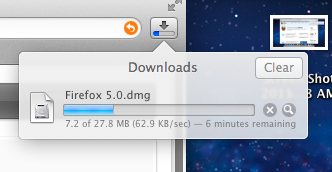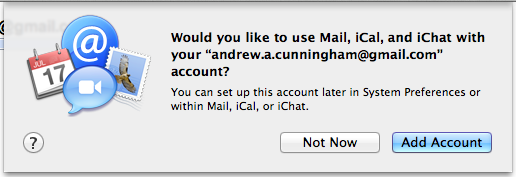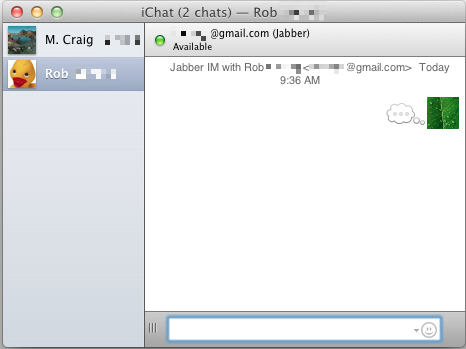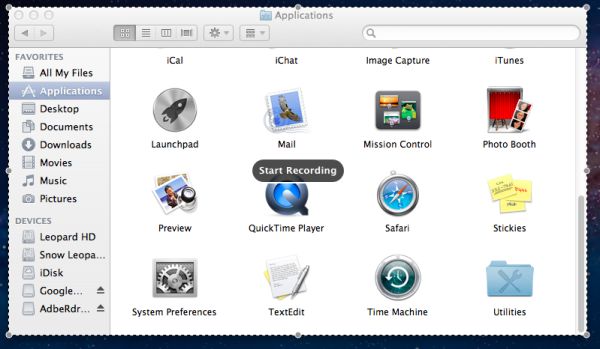Back to the Mac: OS X 10.7 Lion Review
by Andrew Cunningham, Kristian Vättö & Anand Lal Shimpi on July 20, 2011 8:30 AM ESTSafari
Snow Leopard is going to get the new Safari 5.1 when it comes out, so its users will be able to take advantage of JavaScript performance gains, support for new standards, and the security patches included in most new browser releases. In Lion, however, Safari gains a few new OS integration features that probably won’t be backported.
The best of these is a new download manager, which instead of being a separate window (IE, Firefox) or tab (Chrome) is a clickable drop-down window located in the upper right-hand corner of the browser window. Initiating a new download makes the file visually fly up to the button (more of OS X’s visual frippery), and you click this button to check on your downloads’ status (a small progress bar is visible at all times to give you a general sense of how your downloads are going).

As a heavy Chrome/Firefox user, I hope Google and Mozilla are paying enough attention to create their own versions of this.
The second is less interesting, but still useful - logging into a recognized email service (such as Gmail or Yahoo!) will invoke a dialog box asking you if you’d like to setup the account with OS X - this will sync your mail, calendar, and contacts for you (if the services are available from your email provider).

This generally works pretty well if you want to use the client apps, though I prefer to stick to web clients where possible.
iChat
iChat is still largely the same program it has been for some time, but it adds some enhancements it needs to protect itself from web clients (Google Talk, Facebook Chat) on one hand and existing third-party all-in-one clients (Adium, Trillian) on the other. It's all about adding support for different chat protocols, and to this end iChat in Lion adds support for Yahoo! Messenger and video chat, and also for the addition of other protocols via plug-ins. These plug-ins need only be downloaded and double-clicked to be installed.

In use, iChat now presents you with a unified buddy list, with friends across all protocols showing up in one window instead of multiple windows. Conversations with different people show up in a single, vertically tabbed chat window (see above), which allows you to easily switch between conversations without switching between windows. You can break these out into separate windows by clicking and dragging the tabs, same as with most modern web browsers.
TextEdit
OS X's built-in text editor gets a couple of small enhancements: for one, it gains a more useful formatting bar, which is a nice change, and it also gains Versions support.

Despite these enhancements, anyone who needs to do real word processing is still going to install Word or Pages at his or her first opportunity. It's certainly nice to have a built-in program that includes basic support for most document file formats, but it's not exactly a replacement for a real word processor.
Preview
Preview in Lion adds Versions and full screen support, along with a new "Import from camera" feature, which will let you (among other things) take a picture of your signature with your iSight/FaceTime camera to sign PDF forms.
QuickTime X
QuickTime X, now at version 10.1, can cut, copy, and paste video and audio, restoring a missing piece of QuickTime Pro functionality that was much missed when Snow Leopard launched. It also gains the ability to trim, crop, rotate and resize video, as well as insert other videos - all of this makes QuickTime X more capable of serving as a basic video editor. Full screen support is also available; Versions support is not.
Trimming a video in QuickTime X
The screen recording feature can now be trained onto a single area of the screen, rather than just the whole screen - this mirrors the OS’s ability to do screen captures of a single window rather than the full screen. Simply invoke the screen capture feature and drag a box around the window you want to record.
Selecting a portion of the screen to record
Sidenote: Can anyone tell me when Apple plans to replace QuickTime 7 for Windows users? Seriously, if Apple could deliver something like this for Windows, QuickTime would go from being “that thing that installs with iTunes” to a really useful program. It doesn’t seem likely or anything, but I’m just saying...












106 Comments
View All Comments
rs2 - Wednesday, July 20, 2011 - link
Okay, it makes sense on a touch device where your finger is actually making contact with the thing you are scrolling. But a mouse cursor is *not* a finger. It is not an analog for a finger. It is a different input paradigm entirely, and trying to make it behave as if the mouse cursor is your finger by making scrolling go backwards is stupid.It's good that they put in an option to disable the nonsense that is "natural" scrolling.
name99 - Thursday, July 21, 2011 - link
Not at all. The issue is simple : what is the metaphor?When I move my finger, am I moving
- the window container? OR
- the content?
Claiming that one is more "natural" than the other is as stupid as claiming that English is more natural than Chinese. It's simply that you are used to one and, like a good American, you simply cannot imagine that the world could possibly be different --- after all, Jesus spoke English.
rs2 - Thursday, July 21, 2011 - link
Not at all. There is no "finger" when using a mouse. Touch and mouse-driven are distinct input paradigms. If a touch-based interface ever scrolled content in the opposite direction that the user moved their finger, then people would say that it was broken. And rightly so. Moving content in the same direction as the touch is the intuitive operating mode of a touch interface.And similarly, moving content in the opposite direction of the scroll (or more accurately, moving the scrollbar in the same direction of the scroll) is the intuitive operating mode for a mouse-driven interface. By your logic scrollbars themselves should also be inverted.
As a side-note, a direct analog to touch style scrolling does exist in the mouse-driven paradigm, it is the drag operation. It is available in some things like Adobe PDF documents, and also work on any scrollbar. In this operation you choose an anchor-point, and then that anchor point moves in the same direction that you move, and it all makes sense. The problem with scrolling is that it has no anchor point, it is a distinct operation from a drag operation, and by conflating the two Apple has broken their interface. At least until they start incorporating touch into every computer they sell.
Mouse-driven and touch interfaces are not the same thing, and just because a metaphor makes sense in one does not mean that it also makes sense in the other.
Uritziel - Friday, July 22, 2011 - link
Agreed.CharonPDX - Wednesday, July 20, 2011 - link
On page 23 "Performance: Similar to Snow Leopard", you have a couple bar graphs comparing Snow Leopard to Lion performance. Unfortunately, you use a generic "compared to before as 1.0" metric, with no indication on a per-test basis whether higher or lower is better. In the Core 2 Duo graph, you talk about boot time skyrocketing, and the boot time graph for Lion shows Lion as "about 1.4" of Snow Leopard, yet you also talk about iPhoto having a "greater than 10% increase in performance", where the graph shows "about 1.1" of Snow Leopard. So in one line in the graph, higher is worse, in the other line, higher is better.You either need a per-test identifier (Higher is better / Lower is better) or you need to to standardize them all (so 'benchmark' ones would stand as-is, while 'timing' ones would use the inverse, so that both would be 'higher is better', or example.)
Deaffy - Thursday, July 21, 2011 - link
Did anyone check to see whether Apple has included a UI element to enable IPv6 privacy extensions for statelest address autoconfiguration?And did DHCPv6 to get IPv6 addresses from your ISP's cable via IPv6 finally make it's entry?
Deaffy - Thursday, July 21, 2011 - link
Oh yeah, and maybe the ability to query a name server via IPv6?kevith - Thursday, July 21, 2011 - link
they are more and more returning to the Linux it came from. Who knows, they might even go bact to open source:-)Omid.M - Thursday, July 21, 2011 - link
Anand/Andrew/Christian,If you right click on a YouTube video, does it say the rendering AND decoding is "accelerated" ? I thought Lion was supposed to bring that.
If this is now the case, it'd be enough reason for me to buy Lion and a new MBP 15". I can't stand the fans on my 2008 MBP 15 going nuts every time I watch a 30 second YouTube clip. The laptop gets unreasonably hot right now.
@moids
P.S. I'm not a fan of the way buttons appear on the upper borders of windows. There's no typical button "design" to signify that the text is clickable, at least not from the screen shots I saw in the article.
Omid.M - Thursday, July 21, 2011 - link
I guess it's disabled:http://www.macrumors.com/2011/07/21/adobe-suggests...